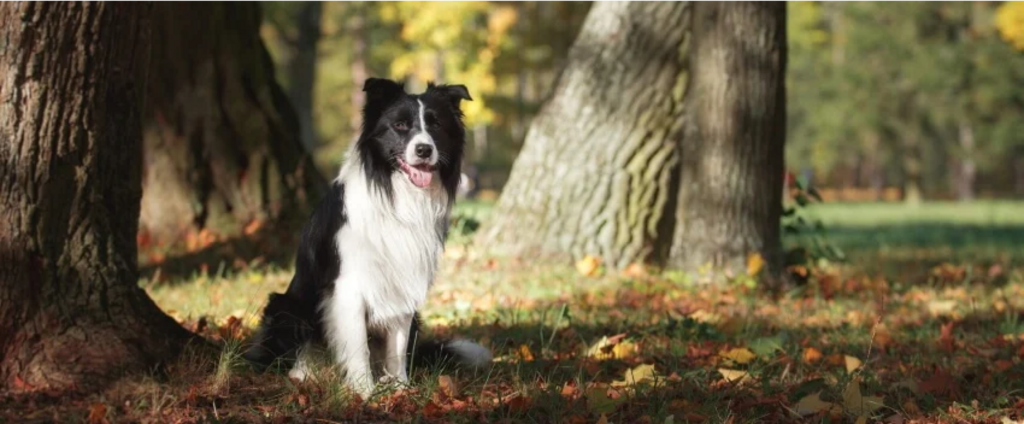Last Updated: 18/06/2025
How smart are dogs? | Dog IQ Test
Ever wondered how smart your dog is? Learn how to put their IQ to the test.
Author: Dr Belinda Stancombe BVSc (Hons)
Reading Time: 21 minutes - medium read
Man's best friend, our furry companions, are more than just cute faces and wagging tails. They're intelligent, playful, and surprisingly clever. From understanding our commands to learning complex tricks, dogs continually amaze us. While they might not ace a human IQ test, their unique canine intelligence is a fascinating blend of instincts and learned behaviors.
Research conducted by animal behaviourists and psychologists has revealed that dogs, on average, possess a cognitive understanding similar to that of a 2-year-old child, shedding light on the depth and complexity of canine cognition.
In this exploration of canine intelligence, we delve into the remarkable ways in which dogs showcase their unique intellect, showing us how smart dogs really are.
Indicators of Canine Intelligence
1. Problem-Solving Prowess
Dogs showcase an extraordinary ability to solve problems, a skill that goes beyond just obedience. In some breeds and personalities this skill appears to be "ingrained".
According to psychologist and leading canine researcher Stanley Coren this is known as Instinctive Intelligence or "what the dog was bred to do". Take, for example, herding breeds such as Cattle Dogs, Kelpies and Collies. These dogs can assess the movement of a herd or flock and strategically guide the animals with precision, demonstrating an impressive level of problem-solving intelligence.
Dogs also show high Adaptive Intelligence, their ability to learn from and adapt to their environment. They are known to be quick learners, capable of navigating various challenges and are flexible in their responses to the changing environment. This type of intelligence to effectively interact with their human companions.
Coren believes that 51% of a dog intelligence is due to genetics while 49% is based on environmental factors.
Puzzle or interactive toys offer dogs the perfect outlet to utilise their instinctive intelligence. Allowing dogs to exercise these skills can decrease the occurrence of destructive behaviour that may be associated with boredom.
2. Socially Savvy
Dogs are social animals with an extraordinary ability to understand and respond to human emotions. Studies have shown that dogs can read human facial expressions and even detect changes in our mood through subtle cues. This social intelligence is a key factor in the deep bond that forms between dogs and their human companions.
In a study conducted at Emory University, scientists used functional magnetic resonance imaging (fMRI) to delve into the intricacies of canine brains. The results showed increased brain activity in certain regions of the brain specifically when viewing human faces, illuminating the depth of dogs social intelligence.
Many dog owners believe that their dogs possess an uncanny ability to sense their emotions. Beyond mere observation, dogs exhibit empathy, a trait long considered exclusive to humans. Their capacity to comfort, console, and exhibit joy in response to the emotional states of their human companions is nothing short of extraordinary. The bond formed between a dog and their owner transcends the boundaries of species, creating a unique and emotionally enriching connection.
This unique ability is the reason why they are trained to work as Emotional Assistance Dogs, supporting people with mental and physical disabilities.

3. Language and Communication
Dogs possess language skills that extend beyond basic commands. According to a recent study, dogs can understand human words and the intonation with which they are spoken.
The average dog can learn around 165 words, with some exceptional individuals learning up to 250 words or more. Super dog Chaser, gained fame for identifying an astonishing 1022 toys by name, showcasing the depth of dogs language comprehension.
Dogs can learn commands after only 5 repetitions and they understand gestures and cues. This further demonstrates a quick learning capacity and enhanced ability to communicate with humans.
Is your dog hungry for words?
Why not test your dog's ability to communicate through words using the Hunger For Words Talking Pet Starter Kit.
Designed to be easy-to-use for both you and your pet, this starter kit guides you on how to seamlessly teach your dog how to speak and let you know what they're feeling.
This product comes with four speech buttons, which you can record simple words with, offering your pet a vocabulary such as treat, outside, play, or cuddle.
4. Learning and Training
The ease with which dogs can be trained is a testament to their intelligence. From basic commands like sit and stay to complex tricks and tasks, dogs showcase a remarkable capacity for learning. In fact, researchers have found that dogs can learn through observation, demonstrating a level of cognitive flexibility and adaptability in acquiring new skills.
Different dog breeds exhibit varying degrees and types of intelligence. For example, the German Shepherd is renowned for its trainability and work as police and search-and-rescue dogs. On the other hand, the Poodle excels in problem-solving and learning complex tricks.
Understanding these breed-specific strengths allows trainers to tailor their approach and capitalise on the unique intelligence of each breed.
Top-performing dog breeds in obedience and working intelligence include:

5. Memory Mastery
Dogs possess an impressive memory, particularly when it comes to associative memory. Associative memory is the brains ability (through the different senses) to make a connection between two things. An example of this is if you put your walking shoes on, your dog immediately rises and is ready to go on a walk, this is because they associate shoes with walks.
One aspect of this incredible memory is their ability to remember people and faces. It turns out that dogs exhibit a strong preference for human faces, and can recall and recognise individuals even after considerable time has passed.
A study on a group of dogs showed that when presented with photographs of familiar and unfamiliar faces, dogs consistently showed a higher level of interest and engagement when exposed to the images of people they knew. This ability contributes to their role as protectors and guardians, as they can discern between familiar and potentially threatening individuals.
The memory of faces is not just limited to humans. Dogs also demonstrate an ability to remember and recognise the faces of other dogs, forming social bonds and maintaining relationships within their own canine community.
Dog IQ Test
Testing a dog's IQ can be a fun and engaging way to understand their cognitive abilities. While it's not as standardised as human IQ tests, you can create a simple DIY dog IQ test at home.
Materials Needed:
Test 1: Towel or Blanket Test
Objective: Assess your dog's problem-solving ability
Instructions:
1. Place a treat or toy in the middle of a rolled-up towel or blanket
2. Encourage your dog to find and retrieve the treat or toy
3. Time how long it takes for your dog to complete the task
Score:
- Less than 1 minute: 5 points
- 1-2 minutes: 3 points
- More than 2 minutes: 1 point
Test 2: Cup or Container Test
Objective: Evaluate your dog's understanding of object permanence
Instructions:
1. Show your dog a treat and let them see you place it under one of the cups or containers.
2. Shuffle the cups around
3. Observe if your dog can track the cup with the treat and choose the correct one
4. Repeat the process with variations
Score:
- Correct choice on the first attempt: 5 points
- Correct choice on the second attempt: 3 points
- Correct choice after more than two attempts: 1 point
Test 3: Problem-Solving Puzzle
Objective: Test your dog's problem-solving skills
Instructions:
1. Use a puzzle toy or create a DIY puzzle by placing treats inside a box with flaps or openings
2. Your dog needs to figure out how to get the treats out
3. Time how long it takes for your dog to solve the puzzle
Score:
- Solves the puzzle in less than 2 minutes: 5 points
- Solves the puzzle in 2-5 minutes: 3 points
- Takes more than 5 minutes or doesn't solve: 1 point
Test 4: Obedience Commands
Objective: Assess your dog's responsiveness to commands
Instructions:
1. Test basic commands like sit, stay, lie down, and come
2. Observe how quickly and accurately your dog responds
Score:
- Perfect response to all commands: 5 points
- Some commands followed correctly: 3 points
- Difficulty following commands: 1 point
Test 5: Hide and Seek
Objective: Evaluate your dog's ability to find hidden objects
Instructions:
1. Start with your dog in a sit or stay position
2. Hide a favourite toy or treat in a relatively easy location
3. Release your dog and see how quickly they find the hidden item
Score:
- Finds the hidden item quickly: 5 points
- Finds the item after some searching: 3 points
- Struggles to find the item: 1 point
Total Score:
Add up the points from each test to get your dog's total score.
Here's a rough interpretation:
- 20-25 points: Genius Pup!
- 10-19 points: Smart Dog
- 5-9 points: Learning and Improving
- 1-4 points: Still a Good Dog
Remember, the goal is to have fun and engage with your dog. Each dog is unique, so tailor the activities to your dog's abilities and preferences. Celebrate their successes, and don't forget to shower them with praise and treats during and after the tests!
Further Reading
Want to read more? Check out our other articles:
How to tell if your dog loves you
History
Our experts continually monitor the health and wellness space and we update our articles when new information becomes available.
Tue Nov 7 2023
Written by Dr Belinda Stancombe BVSc (Hons)Dr Belinda Stancombe BVSc (Hons)
Veterinarian
Dr Belinda graduated from The University of Queensland in 2009 and has worked as a Small Animal Veterinarian for over 10 years in South East Queensland. She also has experience as a telehealh consultant, providing veterinary advice for online customers.She has a special interest in animal behaviour, preventative health, the human-animal bond and internal medicine. Outside of work hours she is closely affiliated with a kitten rescue and is also a devoted carer of orphaned rescue kittens.

